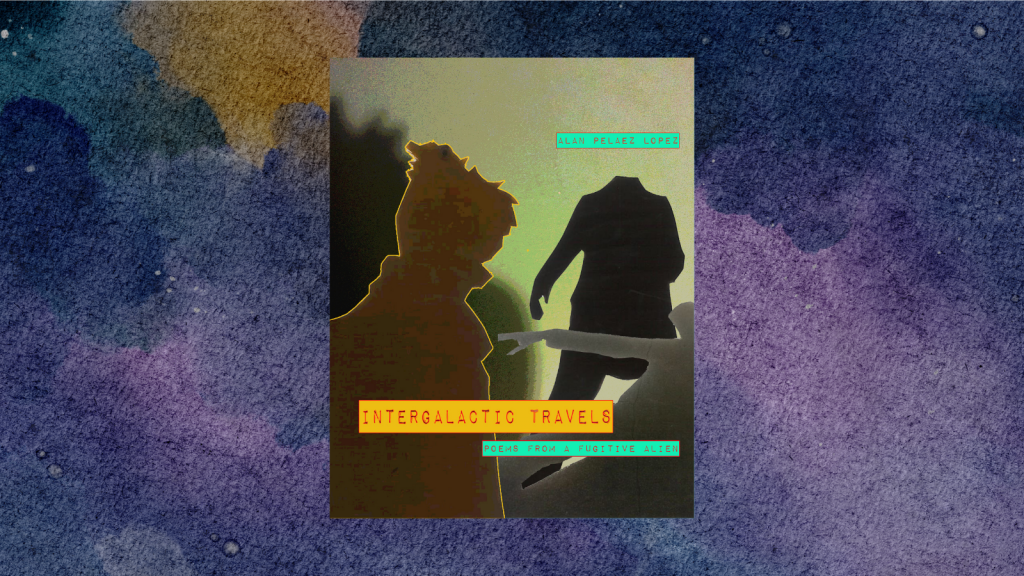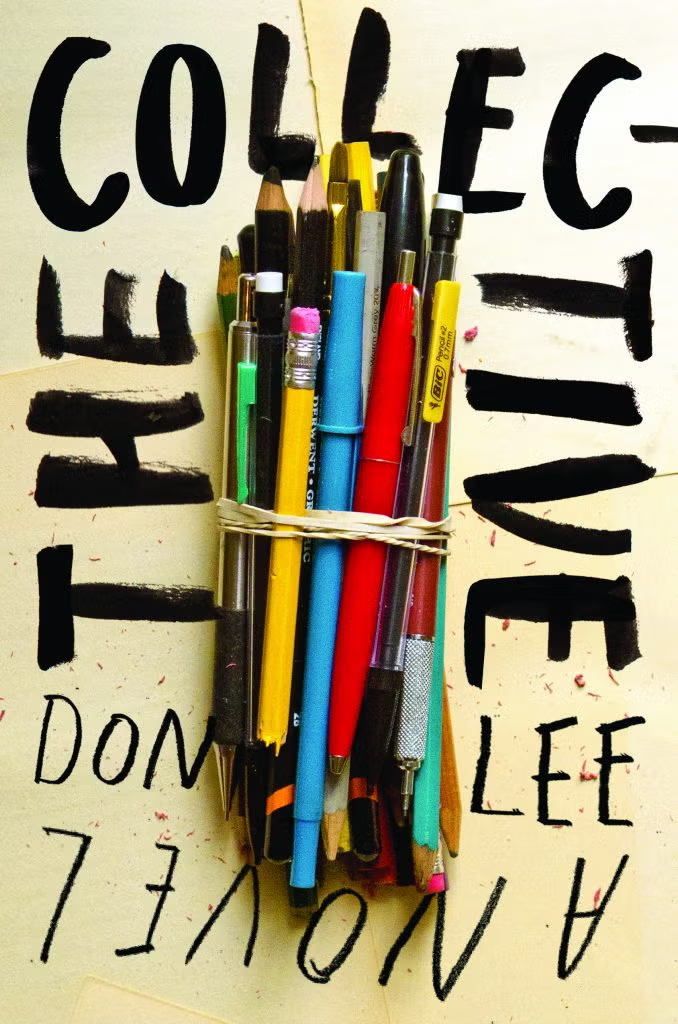What happens to a body after migration? What happens to a body that crosses borders between two nation-states? Is it relevant that both nation-states happen to be fiercely nationalistic, each in their own very violently patriarchal way? What happens when these migrant bodies are racialized and sexualized on both sides of the border, as it happens to many immigrants who are Black or Afrodescendants, Indigenous, Queer? What happens when a body is located at the intersections of these markers? Which violences are revealed by this displacement? Which of them remain hidden? In their first full-length poetry collection, Alán Peláez López answers these questions through poetry, which is a powerful epistemological tool, as the author knows. Poetry allows Peláez López to conjure their experience as a formerly undocumented immigrant from southern México in the United States and the excruciatingly painful journey towards naturalization. Poetry is the tool to produce material testimony of dissent that makes these bodies visible in their full humanity, beyond merely anonymous, tragic statistics lost in policy lingo and the information vortex. The collection was published in 2020 by The Operating System among a brilliant cohort of creators of work that is much needed amidst these tumultuous times.
Intergalactic Travels: Poems from a Fugitive Alien is a large-format book that includes a hybrid form of writing that, at times, resembles lyricism and, at other times, uses colloquial and straightforward language together with nonfiction prose. There is a preponderant use of the memoir vignette in the book based on the autobiographical approach of the work. The speaker uses their life experiences, photographs, and personal documents as evidence and as an argument for the indictment of the neoliberal era and its role in the oppression of those who migrate.
The collection’s strong visual component is a mixture of hybrid writing: experimental poetry and visual storytelling in the forms of collage, installation, pastiche, photography. Peláez López does not mince words as an artist nor as a poet. Language is neither polite nor pretty; it is instead urgent and necessary. Peláez López doesn’t care much about the preciousness of the verse: their energy is focused on what is being said rather than on how it is said. This is an aesthetic decision that serves as an organizing principle for the pieces in the collection. It is important to note that this is a multilingual book. Peláez López divides their collection into five sections.
Unknown provides historical and geographical context by tracing and linking the experience of the poetic voice to a territory. In these poems, the speaker makes an effort to trace a lineage and to put together as much as they can from what they remember to represent something as similar to home as possible. In this gesture, they build a home away from home. The author states in the appendix that one of the greatest afflictions of the cultures that have been subjected to colonial rule is the loss of memory (Peláez López 99). In this section, they provide as much evidence as they can to establish the premise of the book. Through poetic fragmentation, the poet establishes that the enslavement and continued oppression of Black people, the continued genocide of Indigenous peoples, and migrant illegality in the Americas all have the same common origin: colonialism. After securing this point, the poet-artist-activist then proceeds to make a powerful declaration of poetics: “Language, I do not speak. I scream.” (12), says Peláez López as a disclaimer, from the very beginning to establish a mutual understanding with their readership.
Undocumented describes the effects of migration on the body of the undocumented person as a reaction to trauma. By moving the perspective away from the official discourse in the poem, the poet deauthorizes the single narrative and the hegemonic gaze of the all-powerful nation-state. By centering their bodily experience through a powerful exercise of memory, the poet appropriates the sacred, secular symbols and the dehumanizing machinery of the state, such as the border fence (20), the application form for lawful residency (21), the American flag, and the Pledge of Allegiance (31). Peláez López then weaponizes the national symbols against the state by juxtaposing them with the horrors and the pain that so many agents of the state have inflicted on many BIPOC and immigrants, all while claiming to protect their homeland. The focus is on the long-lasting pain inflicted by the multiple forms of the settler state upon the body of the poetic voice. The speaker mirrors the hegemonic gaze and reverses it back at the settlers from the perspective of a queer Black NDN immigrant. Peláez López builds a strong case that these symbols are absurd, since they barely work anymore in perpetuating the erasure of the enslavement of Black people and the displacement and genocide of Indigenous cultures and all those whom the European settlers deemed as beneath them. Peláez López, in this way, defines the American Dream as a symbol and as a disease that has had very consequential effects on their body. Much in the way of “Sick in America” (25), Peláez López subverts the gaze by adding revealing and truthful explanatory footnotes to account for some things that are missing in the official discourses of American nationalism. The poetic voice, therefore, establishes a connection between Black and NDN fugitivities and illegality. Explorations of culture and language are intimately woven together with memories of childhood and interactions with mom, Mamá María. These poems are presented in English together with their Spanish version (32, 33, 36, 37).
One particular poem in Undocumented, “Nine-Year-Old Pregnant Boi” (30), poses a particular indictment of toxic masculinities and their frequent association with Black and Latino masculinities. Peláez López shares an intimate, vulnerable moment from their childhood in which they imagine themself as a pregnant seahorse, knowledge that had been introduced to them by their mother’s boyfriend. By offering this moment of radical intimacy, they invite the readers to contemplate alternatives to toxicity that would make this a safer world for all the seahorse bois like Peláez López, who live outside the borders of gender and the borders of the nation-state. The image of the pregnant seahorse poem challenges traditional ideas of gender formation, especially regarding those associated with Black and Latino masculinities. The gesture is even more effective because of the joy contained in these childhood memories.
Hyperdocumentation portrays the excruciatingly painful process of obtaining a “green card,” or the document that grants lawful residency to otherwise undocumented immigrants or “aliens.” The author deploys their artistic skill and familiarity with documentary poetics and strategies to engage in pieces that bear witness in their own terms. The poetic self showcases and performs interventions over the actual copies of the government forms, correspondence, photographs, and other documentation of the legal process to attain a green card. In doing so, they couple the real effects of trauma “Racialized Nausea” (39) over the body of the speaker as the site of multiple forms of violence and as an immigrant with the embodiment of Blackness, as in “Blackness Embodied” (41). The speaker in this section also questions how the deaths of Black people, NDNs, and immigrants are documented. They create pieces using documents from their everyday life coming from a wide range of sources that include the news (41, 43), their medical records (78), and the painstakingly slow progression of email exchange threads regarding the speaker’s “arbitrary legal case” (85).
This section also describes the harsh conditions in which the immigrant farmers’ families live and the malnutrition of infants which can only be compared to the conditions of what the global powers refer to as “third world” or “developing countries.” How is it that people live like this in the most powerful nation in the world? Unless they don’t qualify as Americans or aren’t American enough, much as it was once a matter of debate if Indigenous people had souls (63). In this sense, the speaker is working through language to establish that the neoliberal age’s immigrant labor fields are no different from the plantations and the missions. Peláez López traces the histories of slavery and the histories of colonialism and interrogates the narrative of alien fugitivity to explain the precarity of their condition as a queer Black NDN immigrant in the U.S.
The parts of the work which engage with the photographs of the artist’s shadow, juxtaposed with the installations with their surviving childhood photographs, are a direct denouncement of the illusions of patriarchy and racism of both México and the U.S. And it seems to correspond with the line that gives the title to the collection: “we have survived the unspoken;// / we have been traveling galaxy after galaxy” (81). Peláez López reclaims the racist and xenophobic trope of the immigrant classified as an alien to work a joyful and playful but, at the same time, still opaque enough identity of the intergalactic alien. This is key to understanding the call for coalition that this volume entails as a product of artistic and intellectual collaboration with other undocumented artists, establishing commonality.
In Post-Documents, the speaker receives a note of green card approval, and immediately over that material surface, they just start asking questions about life after fugitivity. Peláez López asks how to unlearn “illegality” (91), and what to expect after surviving fugitivity. At the same time, they praise all the others who before Peláez López have resisted the arithmetic formula of settler colonialism (93) in its continuous endeavor of assimilation and genocide. It reads: “my ancestors moved through this continent as communal and :: or private property” (92). The section ends with praise and acknowledgment for the generations of ancestors who have resisted the arithmetic operation of settler colonialism by learning from and loving each other. The poet-artist-activist proposes a commonality based on the common injuries produced by colonialism. Their ancestors are all those who have imagined alternative ways of being outside the arithmetics of oppression. These ancestors possess the knowledge that: “to survive fugitivity is to experiment with the (re)making, (re)shaping, and (re) imagining of our bodies each day, ain’t that intergalactic?” (94). This section is a reminder that love and culture are the ways to resist, as the ancestor has shown in the past, and as people like Peláez López are showing in the present: “This [the arithmetic formula of settler colonialism] receives its injuries when we hold the hands of our loved ones in public. This receives its injuries when we remember the taste of iguana stew and roasted grasshoppers resting on clay bowls” (94).
A future, elsewhere defines art and writing as pathways towards healing. It is also a call to arms to form a mega coalition of artists, activists, and organizers to change the world. It is a call to build this “elsewhere,” which will be “shaped by all those who this empire tried to undo” (97), as it reads in one of the handwritten pieces in this section. Then the speaker gives a convocation in the form of an art manifesto to those “Black and/or Indigenous folk surviving empire!” (99). As mentioned earlier, the poet-artist-activist is aware of the loss of memory that their peoples have suffered at the hands of colonialism. They are also mindful of the power of language and art to change the world by creating new collective memories. Peláez López knows that only through art can their people acknowledge the faults and set the record straight about the truth of colonialism. Peláez López declares: “what we have lost as African-diasporic people, as Indigenous people, as queer people, as trans people, and as undocumented people is memory” (99). They claim that the opportunity to build a coalition through the restoration of the people’s memory is the only possible response that artists should have to oppression. This is needed to create a shared space for growth: “our ancestors have left us blueprints of how to resist, survive and thrive, and those blueprints lay in the power of art” (99). Then concludes that the revolution that is not led by artists “is not a revolution that will change culture, society” (101).
In the last piece, which essentially is a text conversation, the speaker paraphrases the famous words between Assata Shakur and her grandmother over the phone: “We can’t accept this reality / We have to refuse as hard as we can / But we need to hold each other to refuse / I want to learn to love better, to hold tighter” (103). The section concludes generously and lovingly that only solidarity and community organizing can topple down the supremacy of the settler state and its multiple systems of oppression.
There is a denouncement of mestizaje and racism coming from the Mexican state and society as described by Mamá María in “Discovering Blackness” (29) and an indictment of mestizaje at the beginning of the collection (8). The ideology of mestizaje embraces the myth of a forthcoming “cosmic race” superior to all other existing races and was fiercely propagated by José Vasconcelos using the power of the governmental branch of education in México as a propaganda machine during the first half of the twentieth century. “Cosmic race” ideology has been historically harmful to Afro-Mexicans and Indigenous people and other marginalized people in México, since they are left out from the notion of national identity and are forever deemed as foreigners in their ancestral lands. Peláez López’s work dispels these ideas that refuse to die by centering their experience of the world as evidence of all this institutionalized xenophobia ingrained in Mexican culture. These toxic aspects of mestizaje have seeped into the construct of Latinidad in the U.S., which poses a whole other discussion about the role of ethnic identity in the erasure and exclusion of Afro-Latina/x/o peoples and Latina/x/o indigeneities. In this regard, Peláez López’s work counters the erasure and violence imposed upon Black and Indigenous peoples by mestizaje on both sides of the border.
The illusions of respectability and the fake promises of citizenship are no longer a mystery in this work. The verse included in this collection dismantles the narratives of hegemony by centering the focus on the lived experiences of a Black NDN queer immigrant. This collection joins others who have recently explored the effects of migration and border politics through their writing such as Silvia Aguilar Zéleny, Rosa Alcalá, Eduardo C. Corral, Roy C. Guzmán, Marcelo Hernández Castillo, Omar Pimienta, Vanessa Angélica Villarreal, and Javier Zamora. The work is in conversation with the poetry written by other queer NDN poets such as Billy-Ray Belcourt (Cree), Natalie Díaz (Latina Mojave), and Joshua Whitehead (Ojibwe Cree). Peláez López’s work also joins a long tradition of writers who have created work that deals directly with Blackness and Black diaspora through strategies and resources borrowed from documentary and autobiographical poetics such as Amiri Baraka, Robin Coste-Lewis, Douglas Kearney, Saidiya Hartman, Robert Hayden, M. NourbeSe Philip, Claudia Rankine, and Assata Shakur.
This poetry collection outlines a response to the question about what comes next after surviving fugitivity. This collection of art and poetry claims that migration is trauma, but writing is healing. Especially if it’s encouraged by mom, as in Peláez López’s case. But writing is also a way to set the record straight after all the lies that the nation-states have institutionalized and to repair in some way the loss of memory that comes from the historical accident of colonization. In this sense, Peláez López claims that “Poetry is how we reterritorialize” (98). This is connected to Bifo’s claim on deterritorialization and returning to the social body through poetry (see: The Uprising: on Poetry and Finance, 2012). In this sense, Peláez López’s work gives back the social body to their people that had been taken away by the neoliberal settler capitalist machinery. Instead of remaining in the opaque world of statistics or “in the shadows,” Peláez López creates a detailed account of what it means to be an immigrant and fleshes it out in the poems. Through poetry, the speaker is also able to find a home far from home by building a collection of joyful memories. The writing included in this volume creates “a story that wasn’t invested in resolution, but invested in revelation” (112). The poems all honor these words from the author directly. It would be very interesting to see in the near future who are the ones, from both sides of the U.S. / México border, who will answer Peláez López’s call and join them to create community.
As much as the publishing of this book that reflects on the experiences of a transnational and multilingual Black NDN writer should be welcomed and celebrated, the reading experience of this book may be disrupted by a few misprints on the bilingual poems in the book. This is unfortunate, but sadly, bilingual readers know that this is not uncommon in bilingual editions published in the U.S. The publishers need to be commended for publishing this work. Still, it is necessary to address the issue by inviting the members of the publishing industry to make a reckoning about the asymmetrical relationship between English and Spanish (and practically with every other language in the world) they reproduce by not handling the sections in Spanish with the same editorial care as they do with English. Consequently, with Peláez López’s proposal, in an increasingly multilingual environment, multilingual works by multilingual writers need to be published by multilingual editors and multilingual publishers. If language is considered to be part of that “loss of memory,” then this is one instance in which the publishers can up their game to become allies by listening to and acting upon Peláez López’s convocation to contribute to change the world by changing the publishing industry first, one editorial seal at a time.






